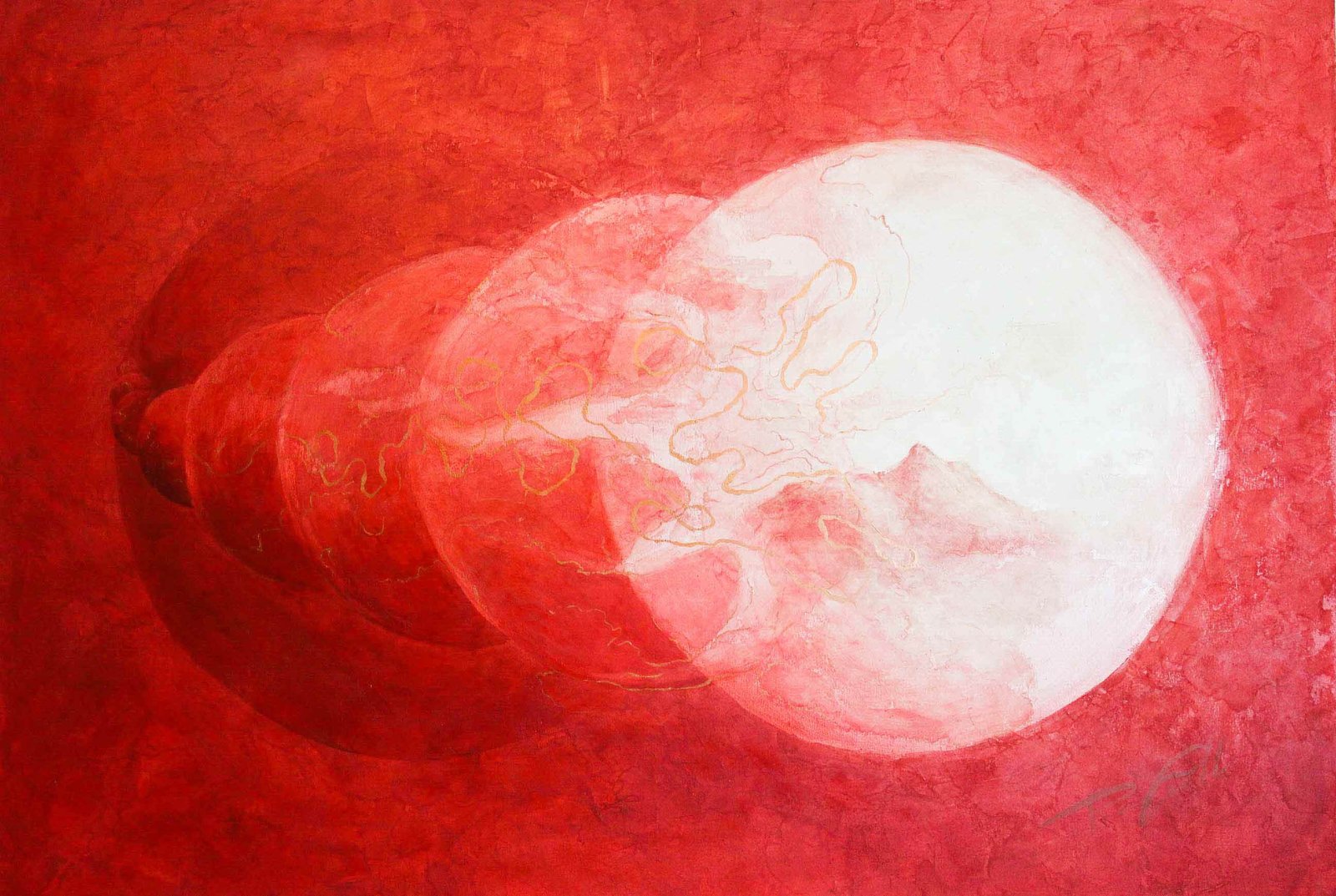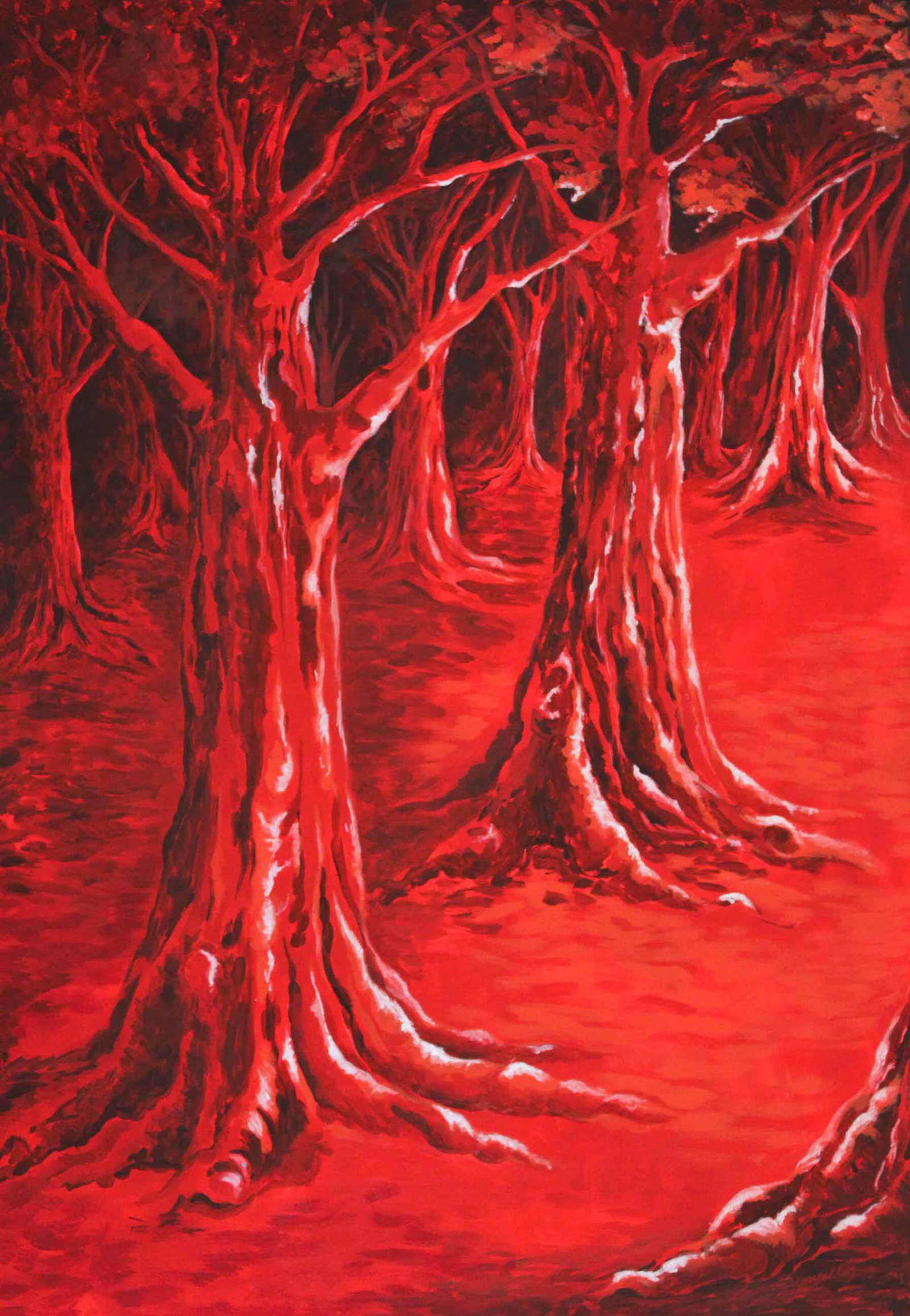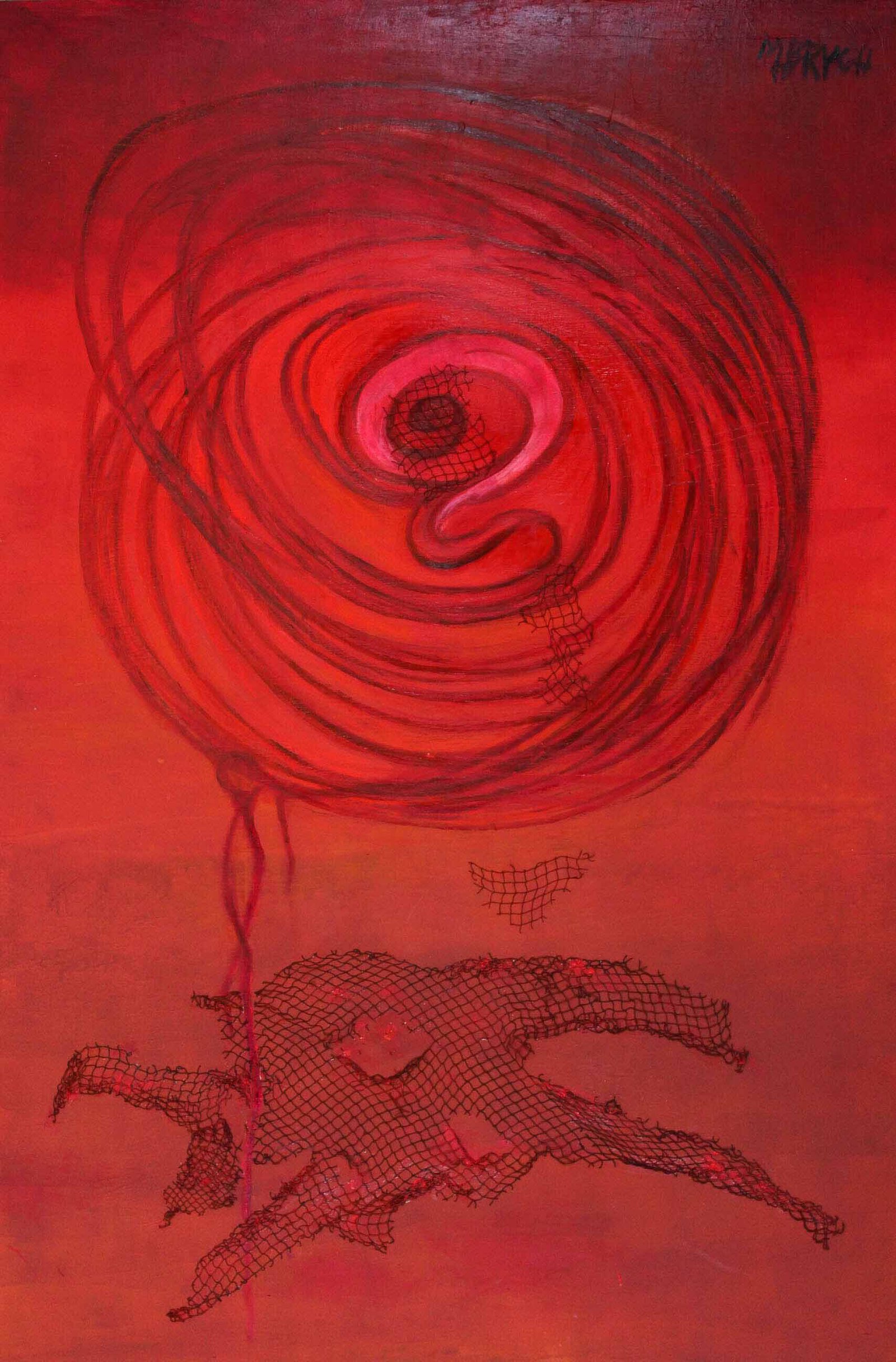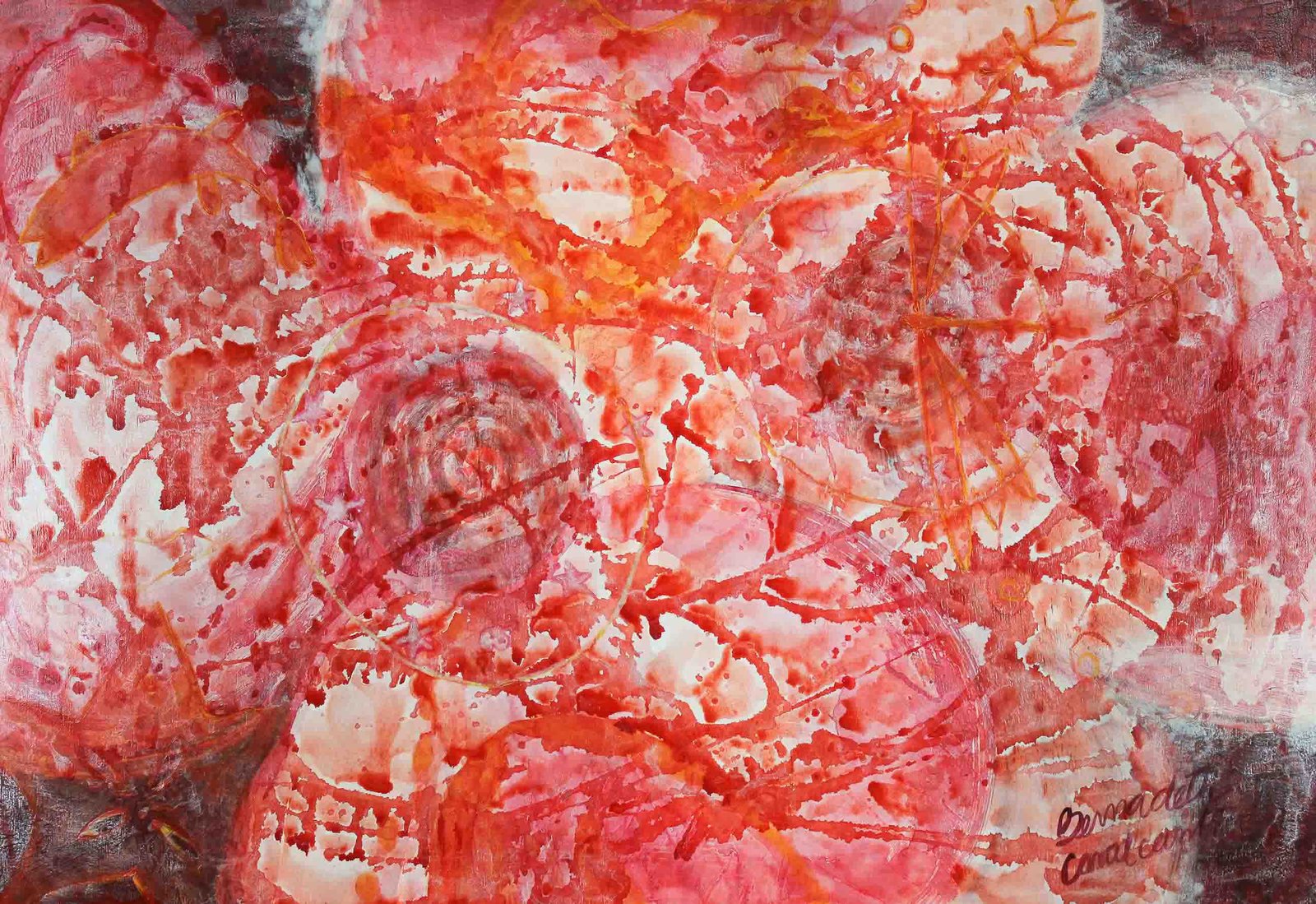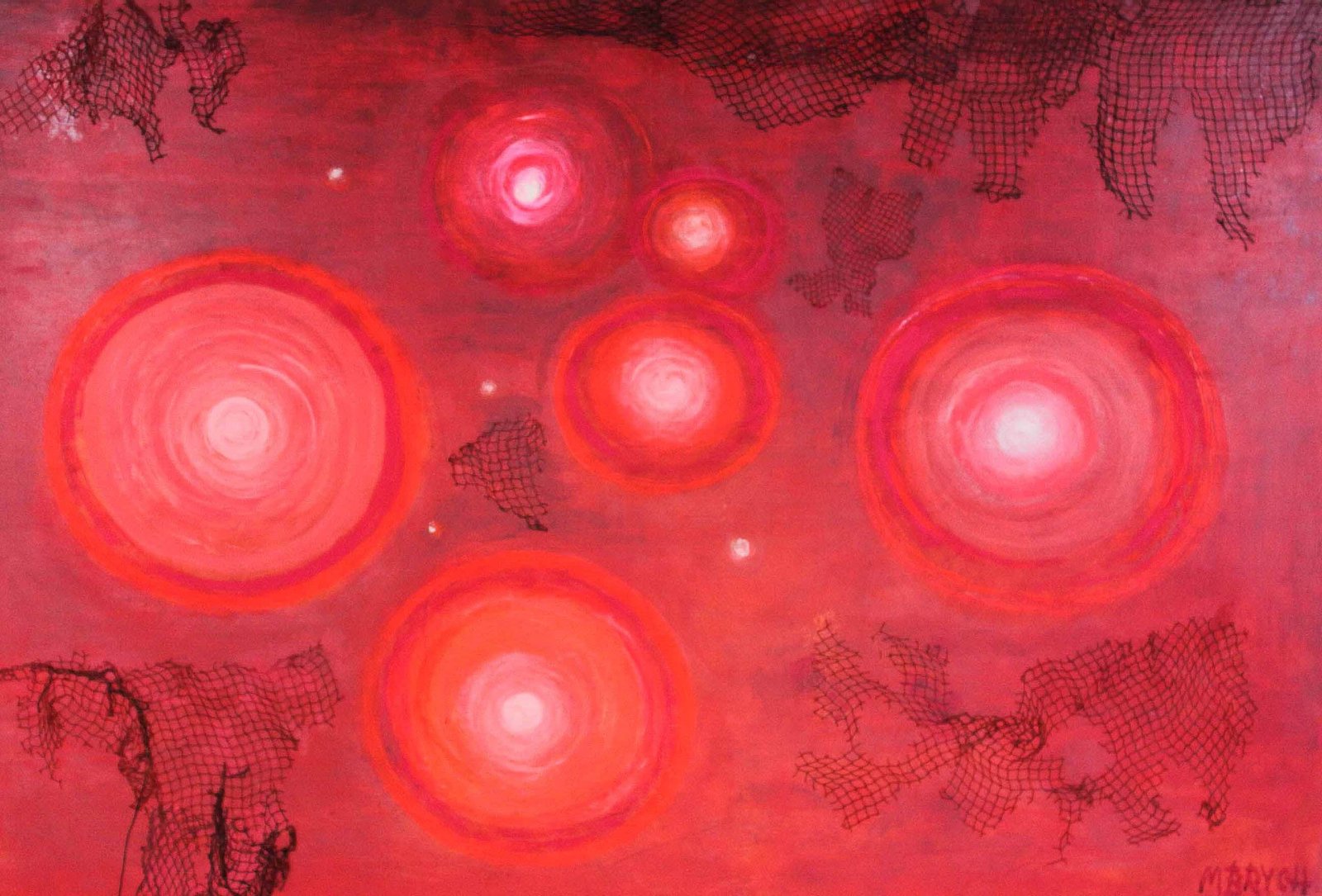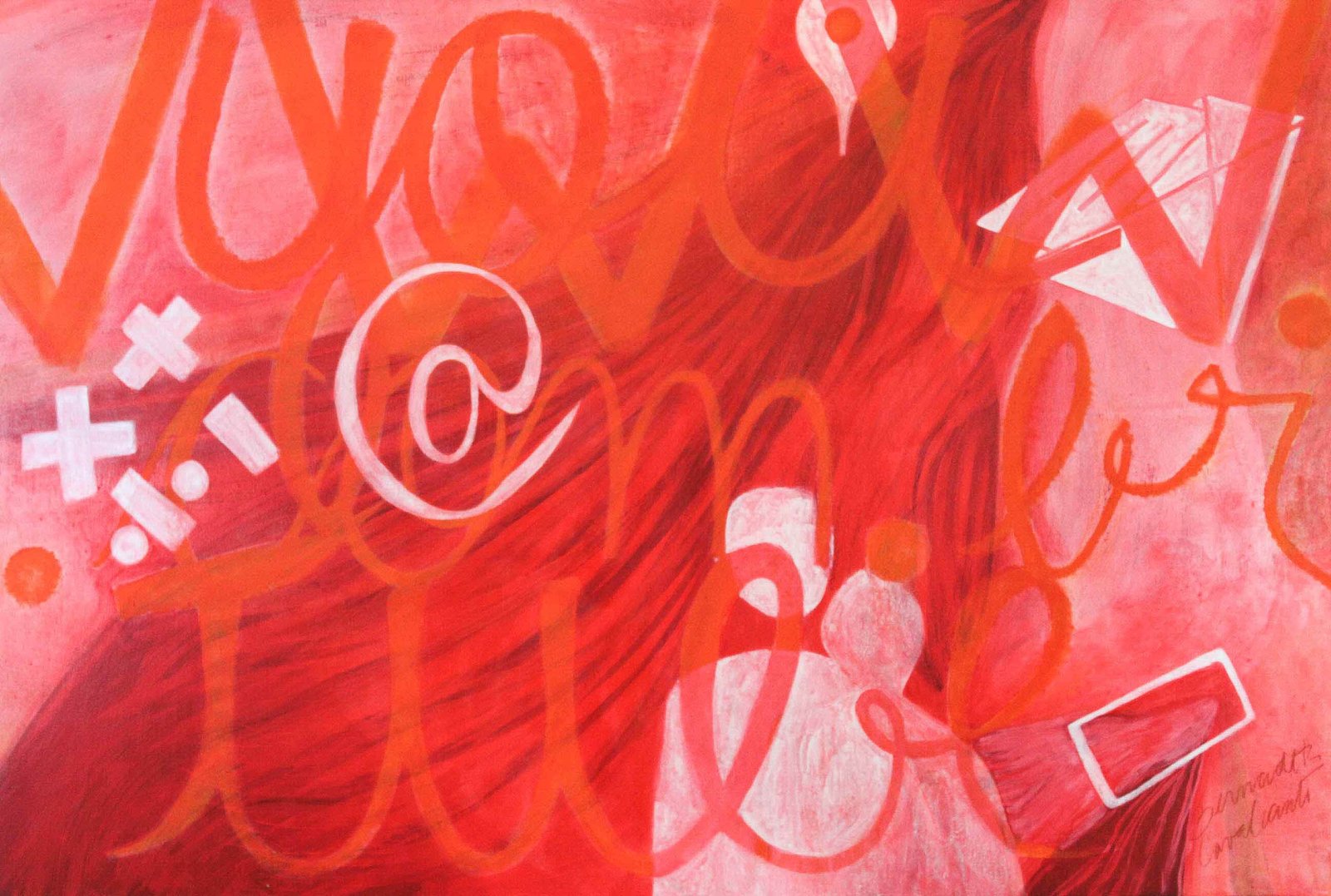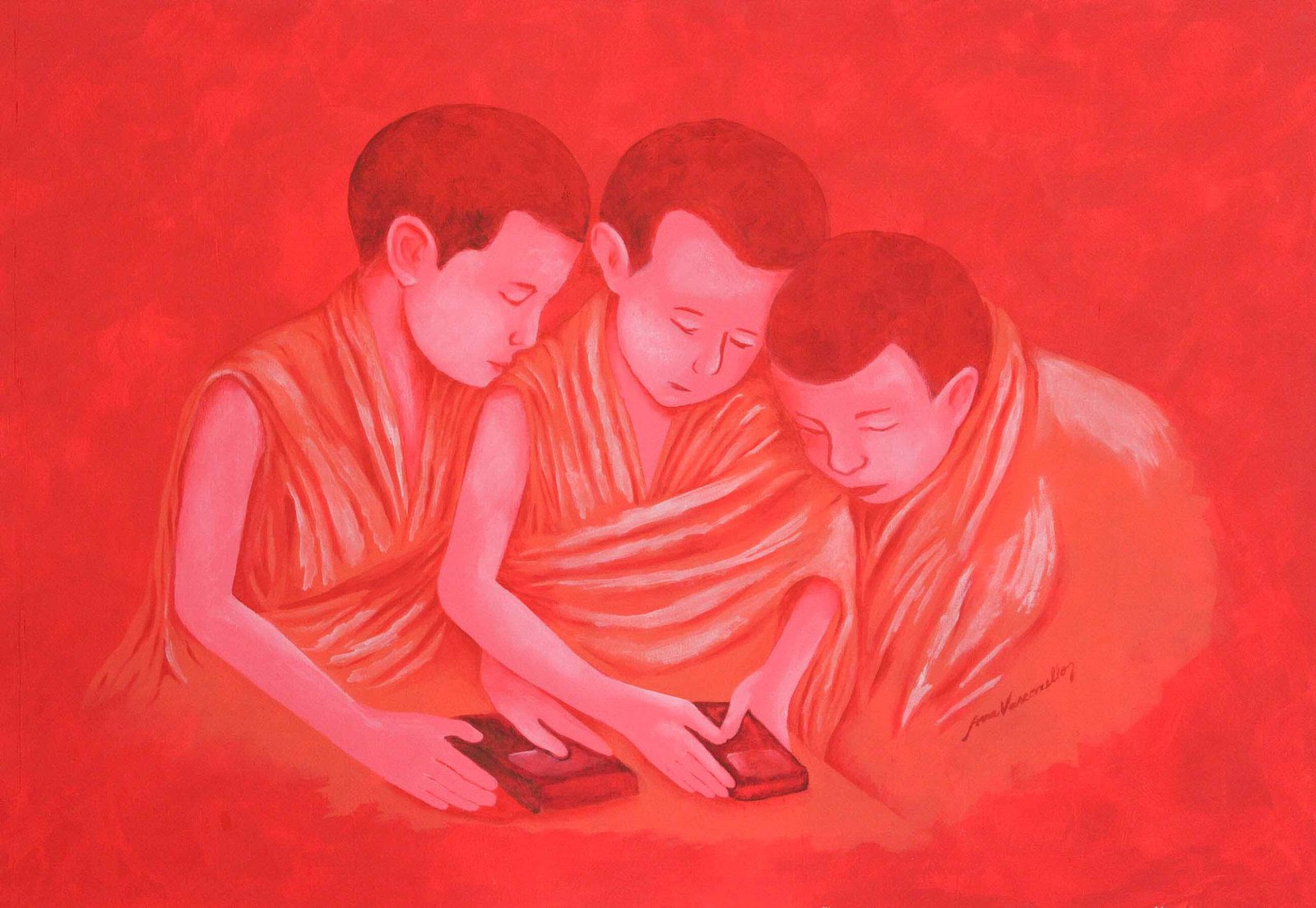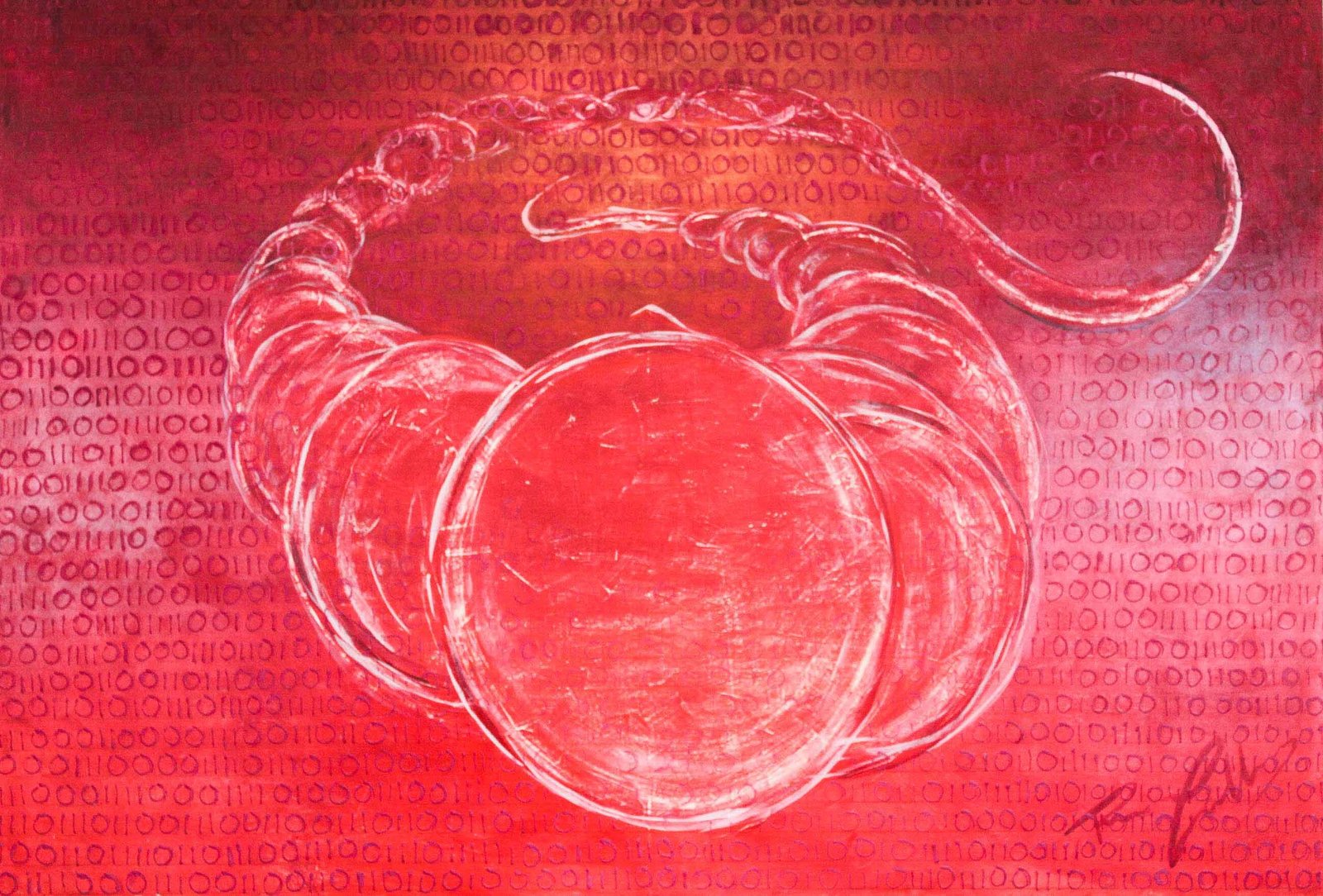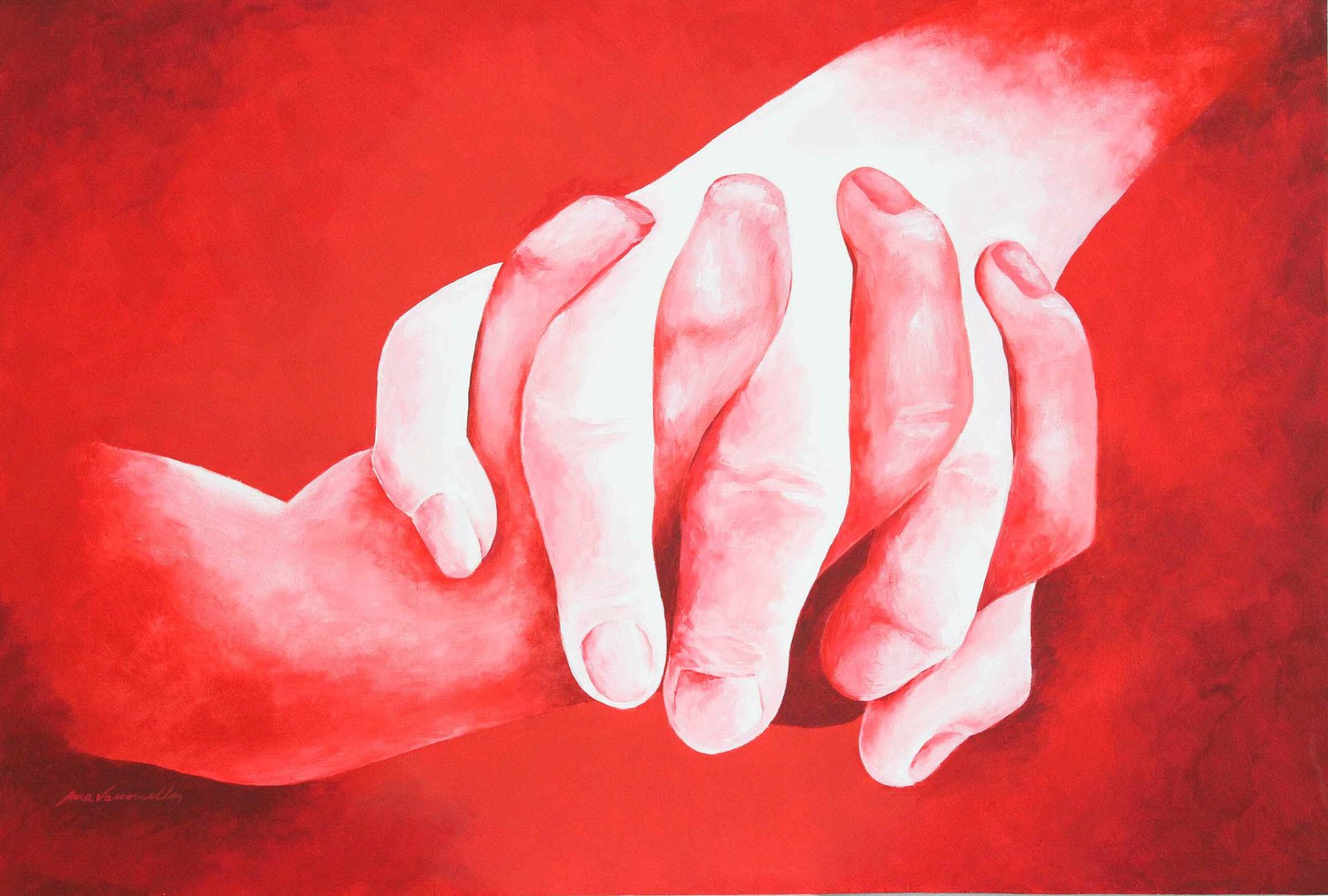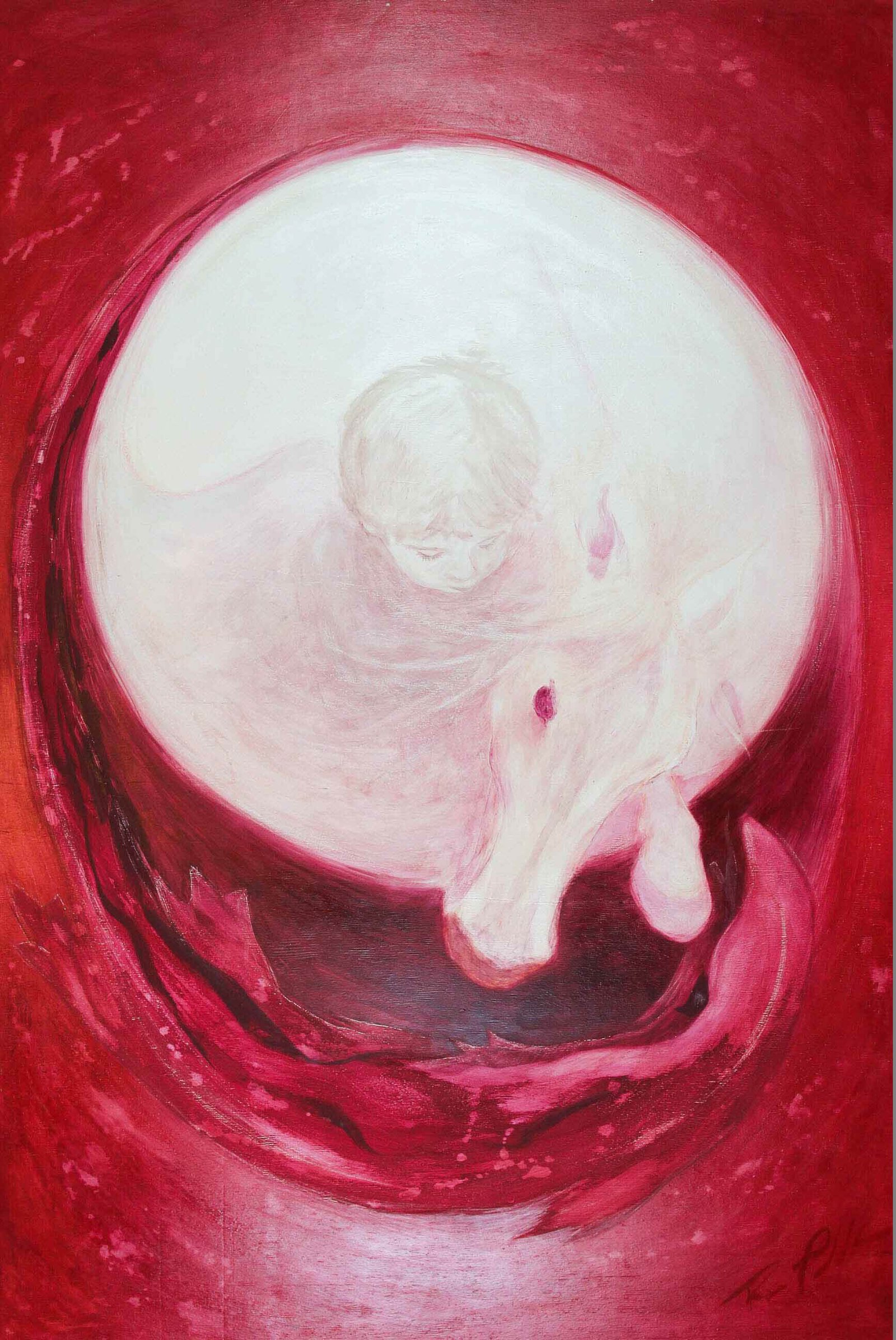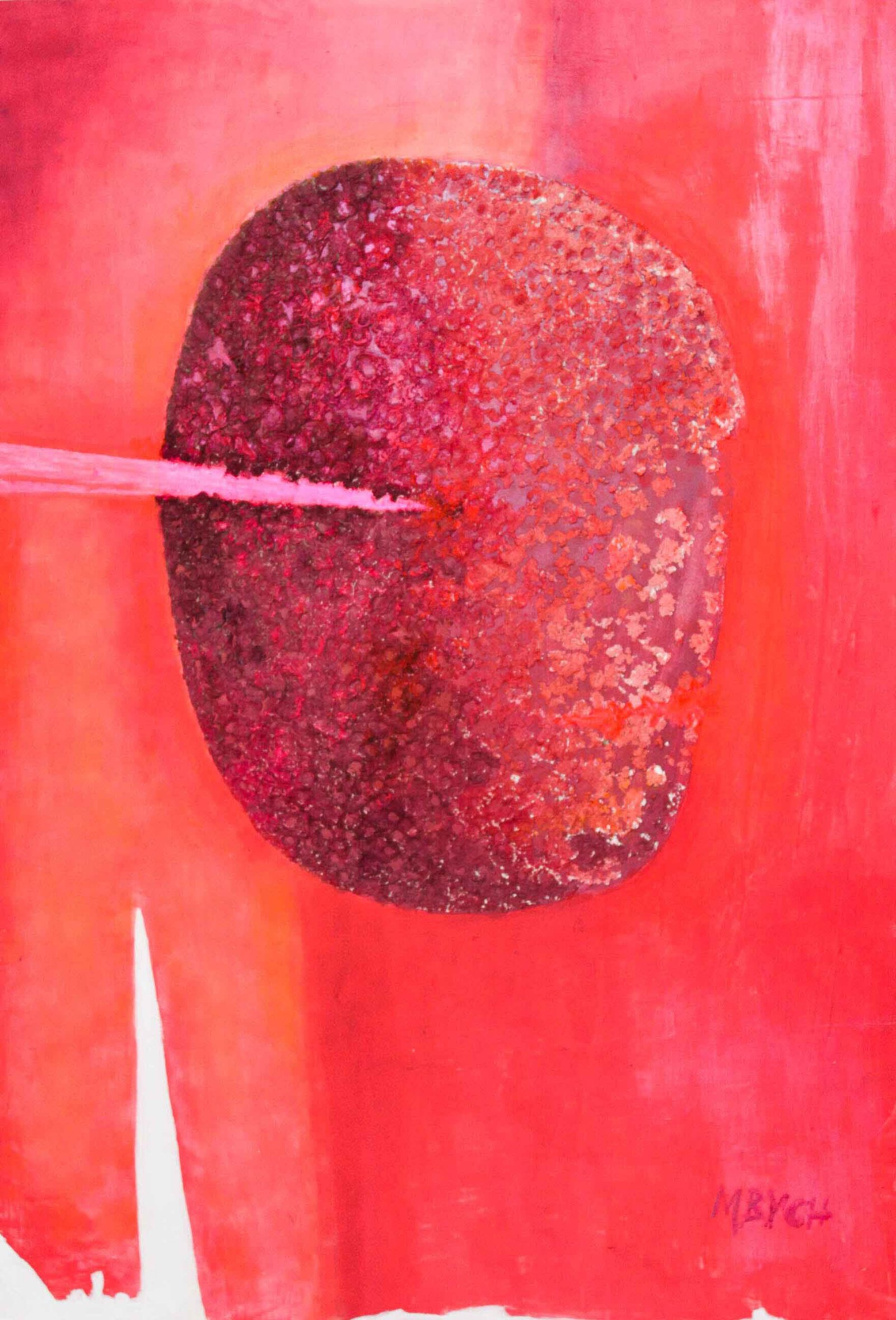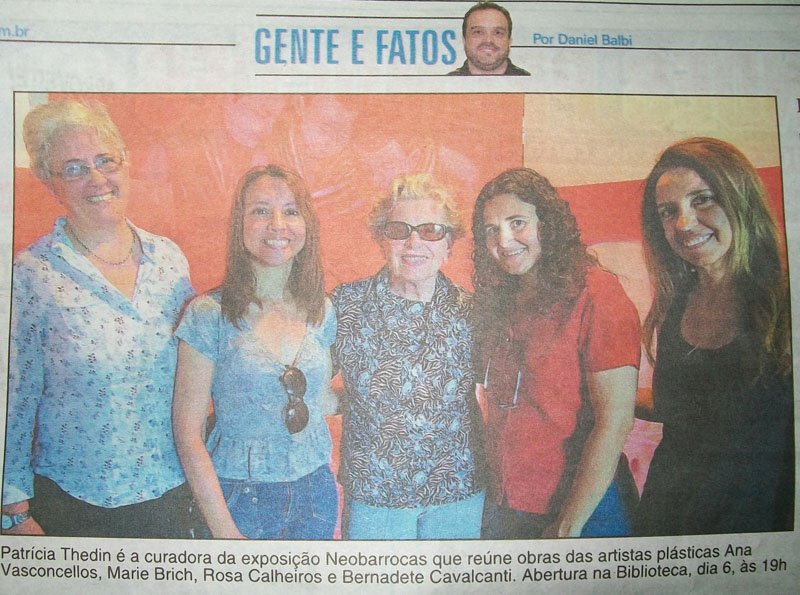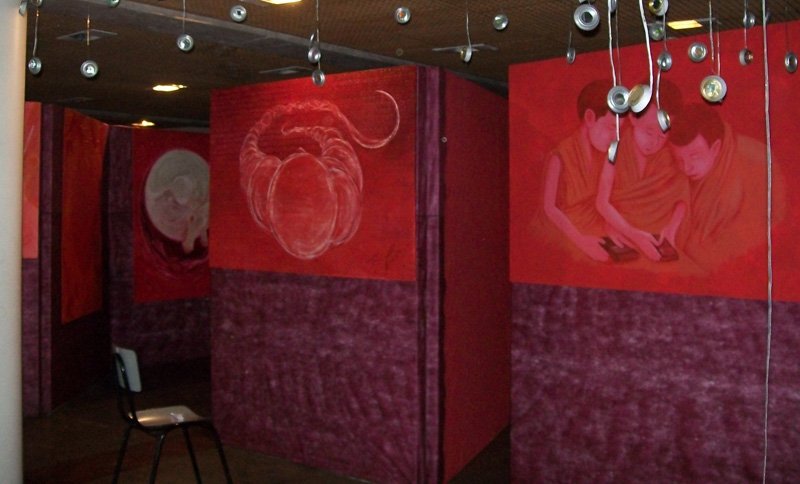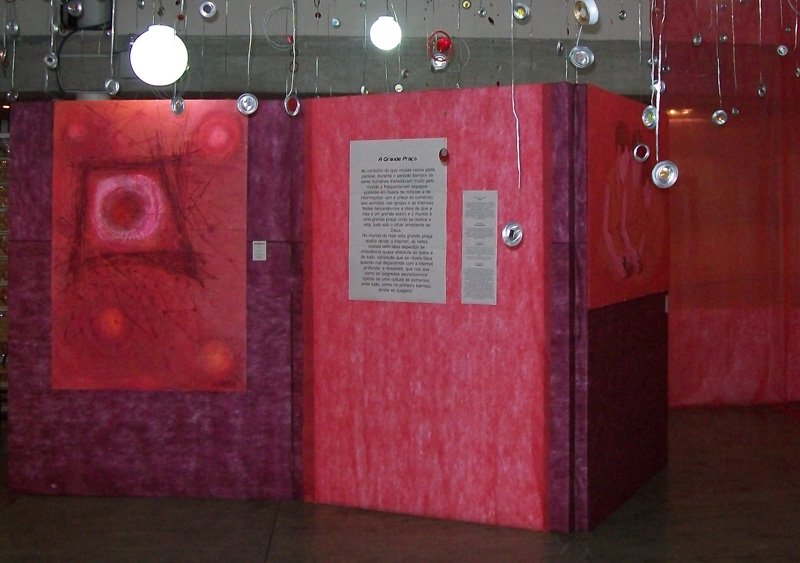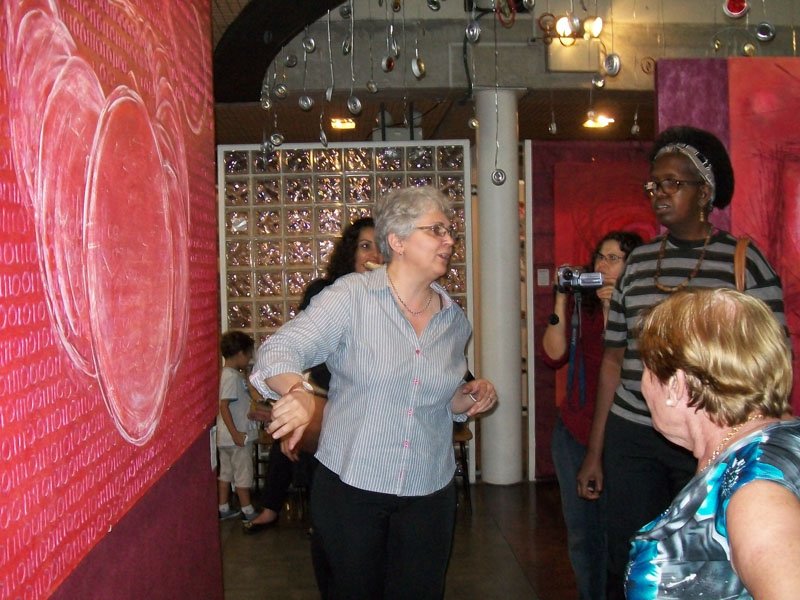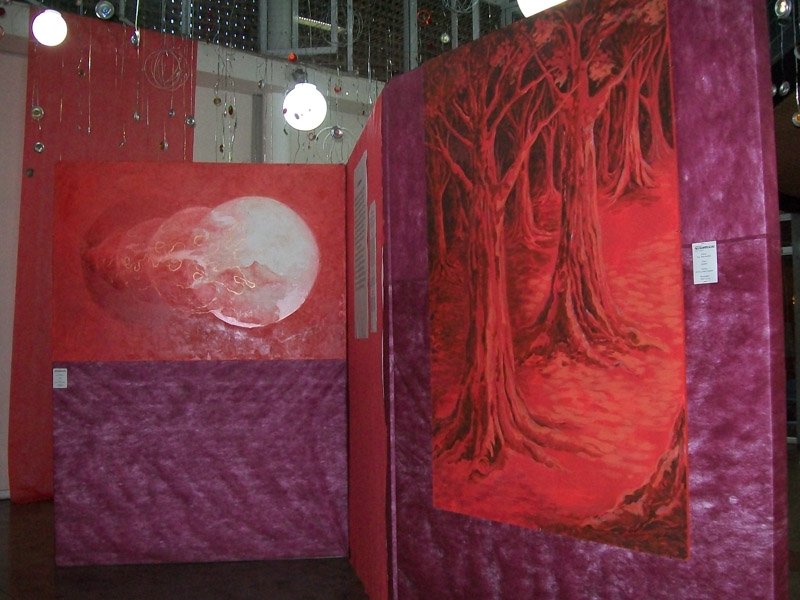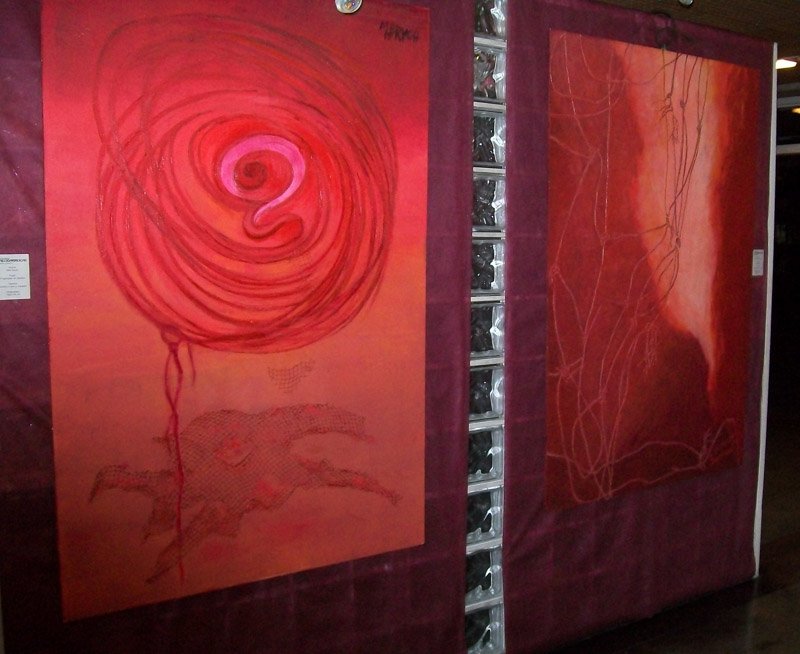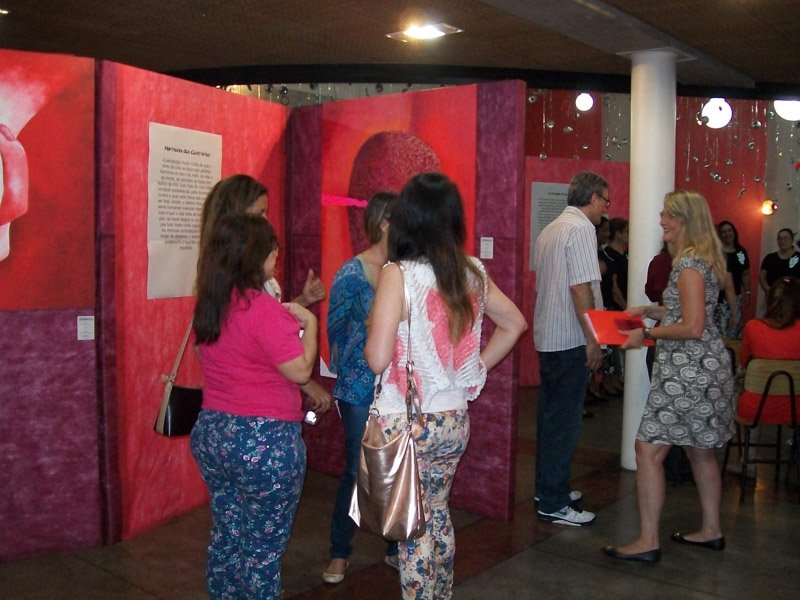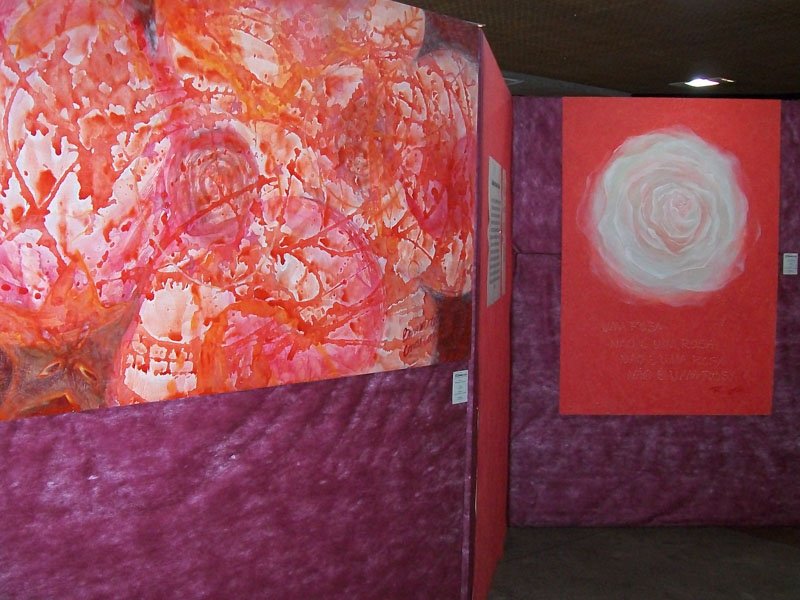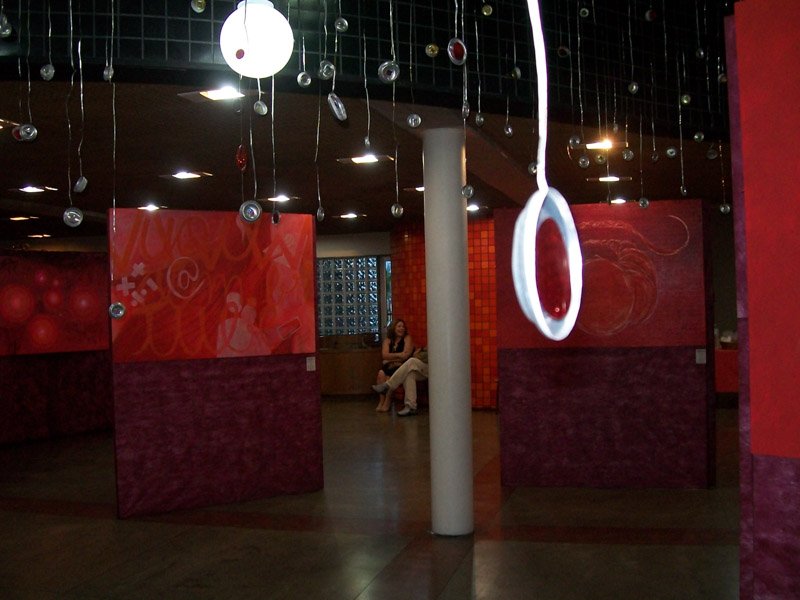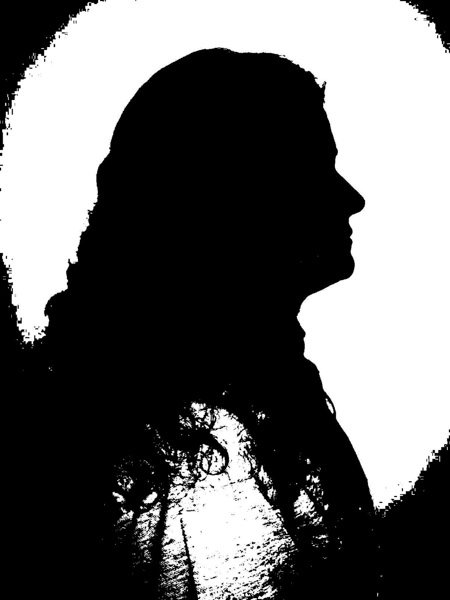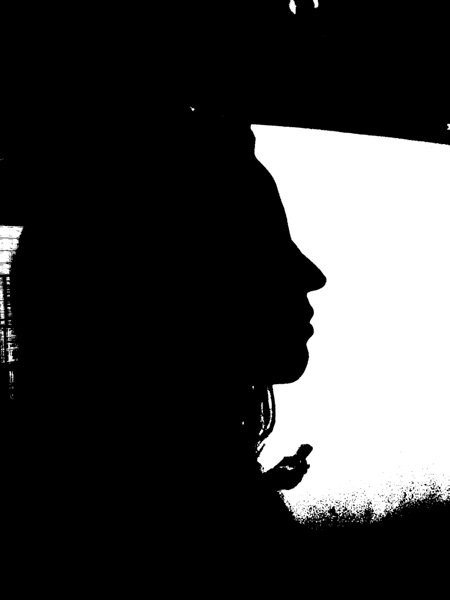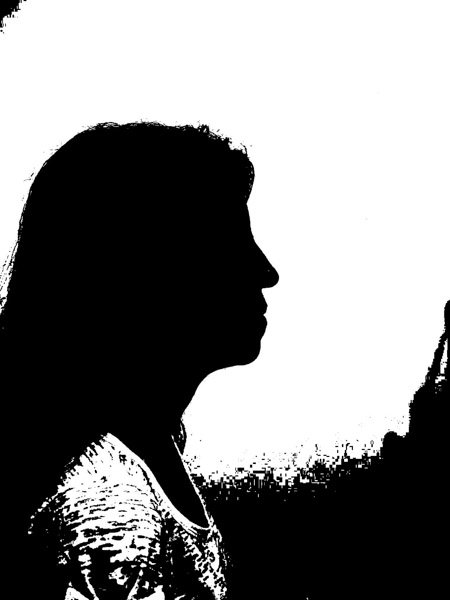Neobarrocas Exhibition
November 2014
The artists chose some typically baroque subjects – not necessarily of the baroque art – that would still be present. They realized that we are immersed in a neobaroque world : a world of extremes, full of labyrinths and top secrets, with a great world-wide square where the dramas of life unfold as in a theater – where they were beforehand observed only by God, and now noticed by all.
Each artist was given a task to produce monochromatic pictures in tones of red – paying tribute to the deep emotions of that historical style – working in baroque elected subjects markedly present nowadays. In this exhibition there will be found the labyrinth; the harmony of the opposites; the great square and the details of the God's mind.
THE LABYRINTH
A Baroque subject par excellence, it remits to the state of mind of the world vision as a great labyrinth to be deciphered, like a dangerous place where the human being can get easily lost in the magical discontinuances of islands that float around the oceans – today virtual – enchanted creatures, witches, angels and monsters who lived on the seafloor.
In spite of the fact that the human being of today finds himself fully rational, connected, 'mapped' and immersed in social networks, the world took a great deal of the baroque labyrinth over again, of the fantastic thing that is taken as real and of a way that can easily lead to a dead end.
In the Greek legend Theseus killed the Minotaur, but he was unable to leave the labyrinth on his own. Ariadne saved him while handing over to him a connecting wire. When he exits victorious, he takes her with him. However, he ends up leaving her on an island where she remains a prisoner forever. There was a god there who fell in love with her. They lived together until Ariadne's death, when Dionisius – the god – launched to the skies the crown of his beloved, which immediately changed into a constellation.
In this painting Rosa talks about our feeling of the world as an impregnable labyrinth, such as a place of belief and perdition. But also full of hope in divine interventions, in magic and unexpected solutions. In the spheres sequence one may see the representation of several worlds by which we pass in life.
The world as a mysterious place, like an infinite labyrinth that attracts us. Ana Vasconcellos evokes the idea of the green desert, that is what happens in great plantations that exploit one single sort of tree. For the artist a paradox appears: at the same time that we look for safety in the repetition of what is already known for us, it is in the extreme undifferentiation where we get more lost.
The sea bottom, the wreck of a ship that was lost. A torn net still hangs. In this work of Bernadeth´s we are brought to the labyrinths of destiny in the great 'sea ocean' of water, blood and salt, but it also brings hope in the form of a light that comes from the surface.
The Fragility of the Destin
Acrylic and collages on wood
160cm X 110cm
Mari Brych
Life itself is a great labyrinth where our destinies flow with absolute uncertainty and frailty.
Encounters, dis-encounters, distances, surprises: every time we reach a dead end, a new destiny, a new labyrinth opens up as another way to be cruised.
Details of God's Mind
It is a clipping, a reference to the immense religiosity that marked the first baroque, with its exacerbated devotion to the extremes of unreasoning – or of another reason. It is not the point of this or that religious expression, but first about human beings immersed in an esthesis that made the world a place replete with details of the God's mind, where everything had a tendency to be perceived as divine within a logic where the certainties of faith would drive the destinies of all.
The rose brings us the rose. The rose is not a rose, is not a rose, it not a rose.
The work is a reference to a known passage of the poem Sacred Emily of Gertrude Stein that here, however appears on the contrary. While the poet tries to withdraw the layers that recover the origin of the sign, the painter recovers the sign with the possibility of other infinite significations.
Do you see the dragonfly? The fish? Do you recognize the carambola? They are almost hidden by the immense bloody flower. Bernadeth talks about a world away from nature, that tragically becomes more and more artificial.
The ballet dancer on the stage. Life as theater. The heavy red curtains. Baroque.
The world closed within. The child who plays with the little ant as if disposed to replicate repeatedly the same shape, the same world. In the corner, the motionless sphere.
An ant, a detail of God's mind, invades the scene attracting the girl´s attention.
Ana talks in here about the necessity of realizing the small signs that oblige us to avoid the obvious and to rethink our world.
Like vanishing points in the darkness of the daily life, the divine reveals itself when it gives us the gift of seeing. It is the emanation of the divine light that makes us realize details that can free us from a life perceived as without exit or senseless. For Mari the details of the God's mind are pure brightness.
The Great Square
On the contrary of what may look like very frequently, during the baroque period people moved a lot around the world, and wandered around public spaces searching for news and information: they would go to the squares of commerce, to the sermons in the churches and to immense festivals leaving to us the idea that life is a great theater and the world a great square where everything in life takes place under the omniscient eyes of God.
In our contemporary world this great square has become the Internet, the social networks with their aspects of almost absolute omniscience of all and of everything, a sensation that is revealed to be false when we come across the deep Internet – the deep web – that sounds to us like the 'top secrets' typical of a culture of extremes, where everything, such as in the first baroque, tends to exaggeration.
Bit (BInary digiT) is the least unity of data that computers "understand". They can be negative or positive (there are electric impulses). A set of 8 bits forms a byte, where the words Megabytes, Gigabytes, Terabytes... come from.
Bit bit reminds us also of the sounds of so many electronic devices that inhabit (pollute?) our lives.
For Bernadeth Cavalcanti the great square of our time is this great communication network that transformed the world – the Internet - and which has become the world of many people.
The work is a free reading of a photo that the artist once saw in the Internet. Three child monks are enchanted with bright appliances (cellphones? games?) creating the sensation of break with the millenarian isolation to which that culture remits.
Connected talks to us of a world full of differences that gets more and more interconnected.
01010101000010101010001111 in the work, the representation of the electric binary impulses, speaks about computer language. It is possible to see a conductor who governs the 'music of the spheres' in this great virtual square into which the world was turned.
The bytes represent all the letters of all the alphabets, all the punctuation marks, accents and still infinite special characters. And there is much more information than we cannot see.
But will it be that the computer turns us really more free because we are connected and informed?
The body of the conductor is not human, but is composed by countless spheres that can expand endlessly. His energetic 'open spheres' hands, however, govern an inaudible music. Is this the music that we want? Rosa reminds of us that it is necessary to be careful with the imperceptible domination to which Internet can subdue us, orchestrating our lives without us even realizing that we are being driven.
For the artist the great square is a virtual space limited by the sole technology that created it. Human nature has much more mysterious bonds that transcend everything. The longing, the dream and the connections that live within our depths keep on being independent and free from any technology.
The Harmony of the Opposites
There was a very vivid perception that the rhythm of life was paced by the perfect harmony of day and night, life and death, of periods of celebration and others of mourning, everything fruit of an unalterable order established by the divinity and against which nothing that existed could be done. Therefore, destiny imposed to mankind that we experienced intensively everything that life had of good or bad : was there joy or pain, everything should be lived to the extreme.
The immense internal contradictions, far from shaking the system, were exactly what gave it a balance.
Masculine and feminine, spiritual force and physical force, emotion and reason like harmonic opposites in the vision of the artist. The union does not exist without the reciprocal force that establishes and maintains the bonds.
Artemis, Greek goddess daughter of Zeus and Leto, is a twin sister of Apollo who, because of having been born first, helped his mother in the labor of her brother. Horrified with the pains that she witnessed, she asked her father to grant her the grace of remaining a single woman. Zeus gave her then silvered arch and arrows and made of her a warrior, master of the woods, the night and the moon.
Regarding one of many legends about the goddess – who is also known as the Lady of the Woods – she would have raised a boy whose mother had died in the childbirth and would have educated him to become a warrior like her. This would have been the origin of Saint George´s tale and hereto his linking with the night and the moon. Artemis was worshiped also as Selene, goddess of the moon.
In the painting Selene and the Warrior Rosa Calheiros defines her vision of harmony of the opposites on a struggle of the good against the evil. As elements of the picture we can realize Saint George still a boy, the moon, the horse, the snake-dragon and the egg that wraps and gives dynamism to the creation, everything spinning on a red sky-space full of stars.
The harmony of the opposites looks like a carpet of leaves that drives our minds to the fragile, to the transitory, to the natural upon which an engraved precious stone is put on top representing the hardness, the permanence and the present culture in the art of engraving. The stone is hard, however it is transparent and it allows to see the opaque leaves that the wind launched on the ground. Vegetable and mineral kingdoms, nature and culture, transparency and opaqueness, wind and quietness, harmonic opposites in the vision of Bernadeth Cavalcanti.
Entropy is the depletion of energy. The term is generally used to describe the natural and irreversible process of ending the energy of the bodies.
In this work the artist refers to the full energy of the beginning of life and its slow disappearance along time, sometimes abruptly sharpened by an unexpected cause.
Life and death: harmonic opposites that permeate human existence.
Neobarrocas Exhibition
Curator: Patrícia Thedin
November/2014 - Ilha do Governador, Rio de Janeiro, Brazil.
Touch/Click to enlarge the images.
